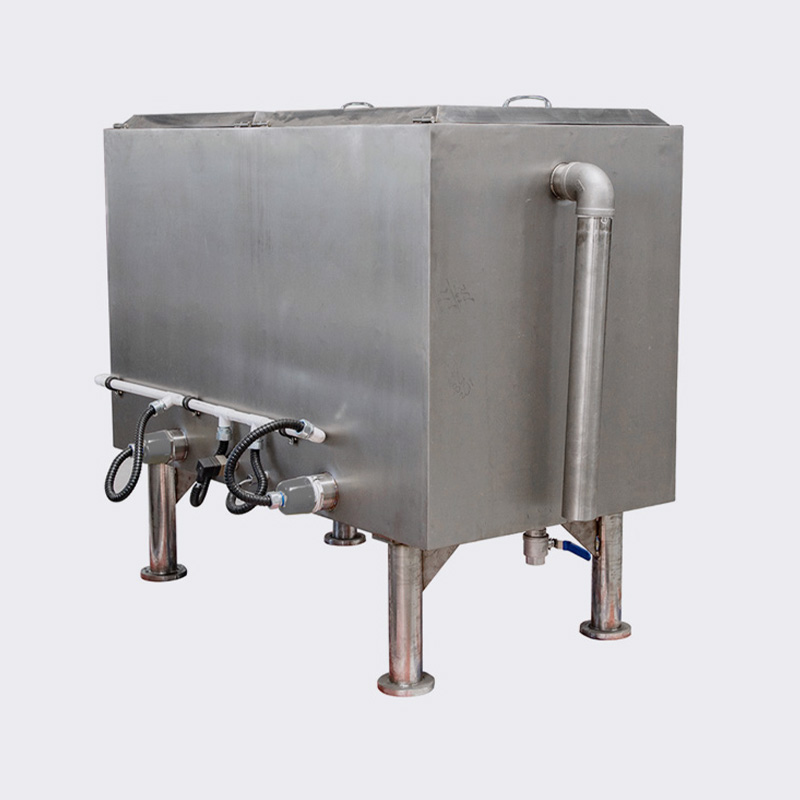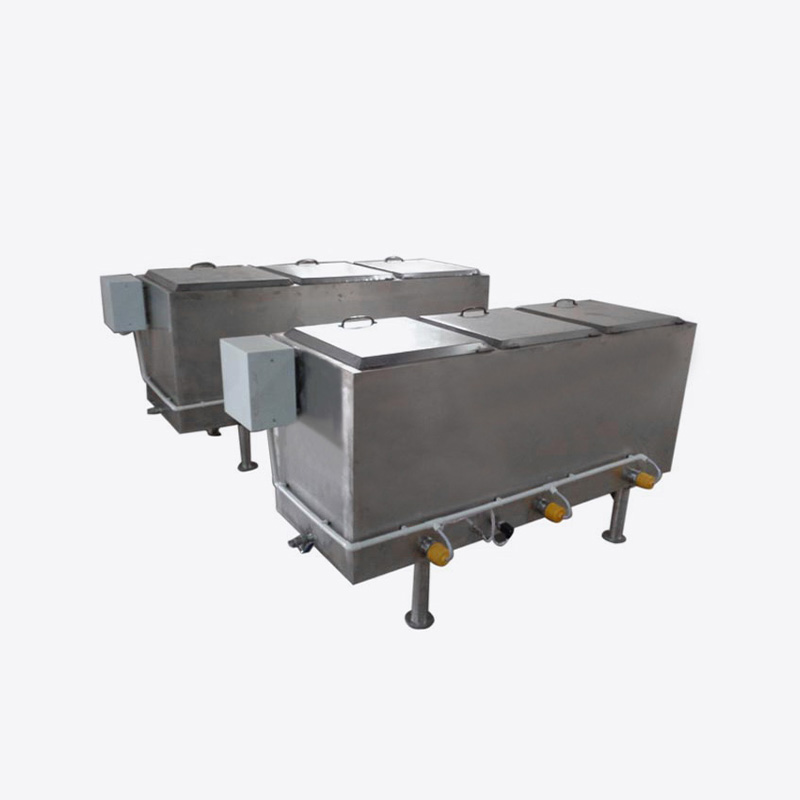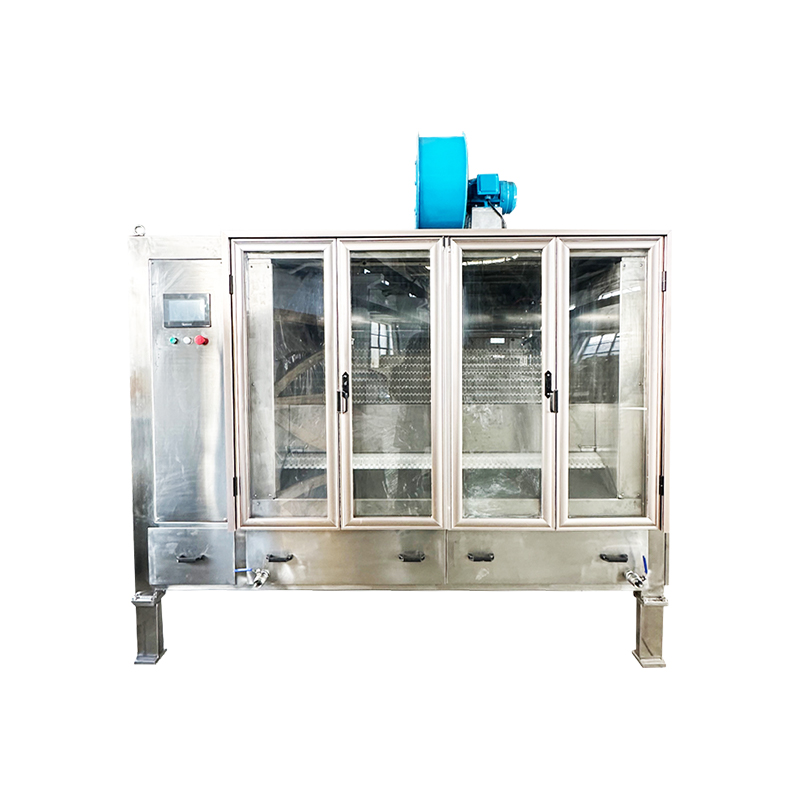What Innovations Are Transforming Chocolate Depositor Technology in Modern Production
In recent years, the confectionery industry has entered a new era of modernization. Among the various equipment upgrades, the Chocolate Depositor stands out as a vital component that reflects advancements in automation, material design, and energy management. Manufacturers and confectionery producers are now exploring new ways to optimize consistency, efficiency, and quality while adapting to evolving production needs.
Automation Enhancements for Greater Efficiency
One of the most significant changes in chocolate depositing technology involves the integration of advanced automation systems. Modern depositors are designed to streamline production through programmable controls that manage temperature, flow rate, and filling accuracy. Automated calibration allows for smoother transitions between different chocolate types or recipes, reducing downtime during production shifts.
Automation not only saves time but also helps achieve uniformity in each batch. Whether producing molded chocolates, filled bars, or decorative patterns, automated depositor systems ensure repeatable precision. This consistency supports manufacturers aiming to balance high output with stable performance.
| Innovation Focus | Key Benefit | Production Impact |
|---|---|---|
| Programmable Controls | Simplifies operation | Reduces manual adjustments |
| Sensor Integration | Improves deposit accuracy | Minimizes waste |
| Automated Calibration | Enhances flow control | Enables faster setup |
Material Advancements Supporting Durability and Hygiene
New materials play a central role in redefining depositor performance. Equipment built from food-safe alloys and advanced polymers offers greater resistance to corrosion and wear. These materials are easier to clean, which helps maintain hygiene standards during extended production cycles.
Manufacturers are also adopting modular component designs that allow for easy disassembly and cleaning. This flexibility supports both small-scale artisan producers and large-scale operations seeking faster turnaround times. The focus on material innovation ensures that chocolate remains uncontaminated and retains its intended texture and flavor.
Precision Control Through Smart Monitoring
The integration of intelligent monitoring systems is another innovation shaping the chocolate depositing process. Smart sensors now collect real-time data on viscosity, temperature, and pressure within the depositor system. This data-driven approach enables operators to make precise adjustments on the fly, maintaining product uniformity across multiple runs.
Some systems can even provide alerts when performance deviates from preset parameters, ensuring that operators can respond quickly to maintain production stability. This form of digital oversight minimizes human error and supports consistent output, even in demanding environments.
Energy Efficiency and Sustainable Practices
Sustainability continues to influence the design of modern chocolate production equipment. Manufacturers are implementing systems that consume less energy and generate minimal waste. Efficient heating and cooling mechanisms help maintain the required chocolate fluidity while reducing overall energy consumption.
The use of recyclable components and eco-conscious manufacturing methods also contributes to long-term environmental goals. For confectionery producers, this shift represents not just cost management but also alignment with global sustainability initiatives.
| Sustainable Focus | Design Strategy | Environmental Impact |
|---|---|---|
| Energy Management | Optimized heating and cooling | Lower power consumption |
| Material Recycling | Reusable or recyclable components | Reduces waste |
| Process Efficiency | Minimizes idle operation | Improves resource use |
Adaptable Designs for Varied Production Needs
Flexibility is becoming increasingly important in chocolate manufacturing. New depositor systems feature interchangeable modules that can handle various molds and fillings. This adaptability allows producers to diversify their product ranges without requiring multiple machines.
Adjustable nozzles, variable-speed pumps, and modular trays enable smoother transitions between different production types. This design approach helps manufacturers respond quickly to seasonal demands or customized product requests.
Integration with Digital Production Systems
In the broader context of Industry 4.0, chocolate depositor technology is being integrated into digital manufacturing networks. This connection allows machines to communicate with other production systems, from tempering units to cooling tunnels, creating a seamless workflow.
Data sharing between machines supports predictive maintenance, where potential issues can be detected and addressed before they impact production. As digital ecosystems expand, such integration will become essential for maintaining competitiveness in confectionery production.
Future Directions in Chocolate Depositor Development
Looking ahead, manufacturers are exploring even more sophisticated enhancements such as:
- Adaptive flow systems that automatically respond to chocolate viscosity changes.
- AI-assisted process optimization for real-time quality assessment.
- Compact, modular depositor models designed for smaller production environments.
These advancements reflect a broader trend toward intelligent, connected, and resource-efficient equipment that supports both artisan and industrial applications.
The evolution of the Chocolate Depositor represents more than just equipment improvement—it symbolizes a shift toward smarter, cleaner, and more flexible chocolate production. From automation and material upgrades to sustainable design and digital integration, each innovation enhances performance and user experience in unique ways.
As the confectionery industry continues to evolve, embracing these innovations allows manufacturers to achieve consistency, efficiency, and quality that meet the changing expectations of global markets. The future of chocolate depositing is not only about precision but also about adaptability and sustainable progress.
How to Choose a Chocolate Depositor That Matches Your Production Goals
In the evolving confectionery industry, selecting the right Chocolate Depositor has become an essential part of creating consistent and efficient production lines. Manufacturers and chocolatiers are looking for systems that can support different recipes, molds, and production scales while maintaining smooth workflow and product quality. The key lies in understanding how different depositor structures, operating modes, and configurations align with specific production goals.
Understand the Production Requirements
Before investing in any machinery, it is important to assess the intended production capacity and the type of chocolate products being made. Depositors vary in their working styles, whether designed for small batches or continuous operations. Some are better suited for filled chocolates, others for solid bars or decorative applications. Identifying the desired flexibility and output helps narrow down suitable choices that align with business objectives.
| Production Type | Depositor Style | Key Considerations |
|---|---|---|
| Small artisan batches | Manual or semi-automatic | Easy cleaning, precise control |
| Mid-scale factories | Servo-driven | Consistent deposit volume |
| Large production lines | Integrated system | Synchronization with conveyors |
This simple comparison shows how production intent influences equipment selection and layout planning.
Evaluate Material Compatibility
Not all chocolate mixtures behave the same way during depositing. The flow rate, temperature stability, and viscosity can influence which depositor setup works best. A well-matched depositor ensures that each batch maintains uniform texture and visual appeal. It is worth reviewing whether the system accommodates diverse chocolate types such as compound coatings, milk, or dark variations, especially if product diversity is part of the production goal.
Consider Flexibility and Future Scalability
Production demands rarely remain static. Businesses that plan to expand or diversify should look for designs that allow easy adjustment or integration into larger systems. Depositors that support interchangeable nozzles, multi-row configurations, or programmable controls offer practical options for changing product types without complete reinstallation.
Maintenance and Hygiene Planning
Routine maintenance affects both machine lifespan and product safety. Systems with accessible components, smooth surfaces, and simple disassembly can reduce downtime and ensure cleanliness. Since chocolate can solidify quickly, timely cleaning routines prevent buildup and maintain consistent output quality.
Energy and Process Efficiency
Modern production emphasizes energy efficiency and waste reduction. The right depositor should align with the company's sustainability objectives by minimizing material waste and optimizing energy use. Monitoring power consumption and cycle timing can also help identify ways to streamline processes and control costs.
Integration with Existing Systems
For facilities already equipped with tempering, enrobing, or cooling machinery, compatibility is crucial. A depositor that synchronizes smoothly with other equipment ensures a continuous process, reducing manual handling and potential contamination. Planning for automation compatibility can also prepare the factory for future upgrades.
After-Sales Support and Training
Even the most advanced equipment performs better when operators are properly trained. Choosing a supplier that provides user guidance, setup assistance, and regular support can enhance daily operations. The focus should be on stable performance and practical troubleshooting rather than on flashy technical claims.
Selecting a Chocolate Depositor is not just about the machine itself but about how well it integrates into the production ecosystem. It requires balancing precision, flexibility, and efficiency while considering long-term growth. By carefully aligning each specification with production goals, manufacturers can achieve consistency and operational stability across every batch.
Why Sustainable Chocolate Depositor Design Is Gaining Attention
The global confectionery industry continues to experience a shift toward sustainability and responsible production. Manufacturers are rethinking the way equipment is designed, and one area drawing considerable focus is the Chocolate Depositor. This shift reflects a broader movement within food production—balancing performance with environmental care and resource efficiency.
The Changing Mindset in Chocolate Manufacturing
As awareness of environmental impact increases, producers are placing greater importance on energy conservation, material recycling, and waste reduction. Modern depositors are being developed with designs that emphasize lower power consumption, better thermal control, and minimal material waste during the depositing process. This transition not only meets environmental standards but also aligns with the growing preference for cleaner, more efficient production methods.
Use of Recyclable and Durable Materials
One major trend shaping the evolution of depositor equipment is the adoption of recyclable materials and components with longer operational life. This helps reduce the frequency of part replacement and limits waste generation. In addition, using corrosion-resistant materials ensures that equipment maintains its performance under different working conditions, extending its usability without frequent intervention.
| Design Focus | Sustainable Impact | Production Benefit |
|---|---|---|
| Recyclable components | Less industrial waste | Lower disposal cost |
| Efficient temperature management | Reduced energy use | Stable chocolate texture |
| Modular assembly | Simplified maintenance | Lower downtime |
This approach creates a balance between functional reliability and environmental goals, offering practical benefits for both small-scale and industrial manufacturers.
Energy Optimization and Smart Control Systems
Technological improvements have allowed depositors to use intelligent control systems that manage energy distribution more effectively. By optimizing heating cycles and motor operation, these systems help minimize unnecessary consumption while maintaining consistent depositing accuracy. The integration of smart monitoring also enables operators to track performance data, helping to identify potential inefficiencies before they affect production.
Reducing Material Waste in the Production Process
Chocolate production often involves precise control of ingredients and temperatures. Sustainable depositor design aims to minimize product loss during setup, transition, or maintenance. Through improved flow systems and accurate dosing mechanisms, producers can achieve consistent output while reducing leftover materials that would otherwise require reprocessing.
Aligning with Market and Consumer Expectations
The rising global interest in environmentally responsible products is influencing not only packaging and ingredients but also the machinery that supports their creation. Buyers are becoming more aware of how their choices affect the planet, and manufacturers who adopt sustainable production equipment demonstrate a commitment to these values. This alignment strengthens trust between producers, distributors, and consumers.
Long-Term Cost Efficiency through Sustainable Design
While environmentally conscious equipment might initially require more investment, its long-term benefits often outweigh the initial costs. Machines that are easier to maintain, consume less energy, and last longer contribute to lower operational expenses. In this sense, sustainability becomes both an ecological and economic advantage, allowing manufacturers to plan for future growth while remaining mindful of environmental responsibilities.
The Road Ahead for Sustainable Chocolate Depositors
As environmental policies tighten and consumer awareness grows, sustainable machine design is expected to remain a strong focus. Manufacturers are exploring hybrid materials, innovative coatings, and improved automation features to enhance durability and minimize waste. Collaboration between equipment engineers, chocolatiers, and sustainability experts is driving this transformation further.
The evolution of the Chocolate Depositor reflects a broader change in how the confectionery industry approaches production. Sustainability is no longer just a trend—it has become a guiding principle that influences equipment innovation, resource use, and operational planning. By adopting eco-friendly design principles, manufacturers are shaping a future where efficiency and environmental care work hand in hand.



 English
English Español
Español









